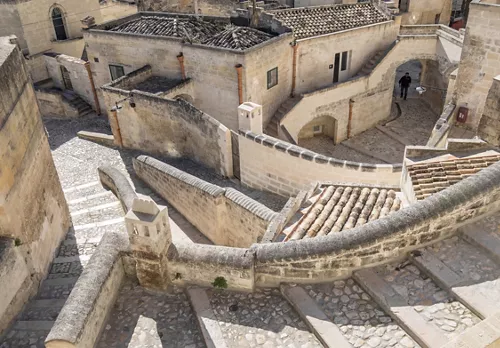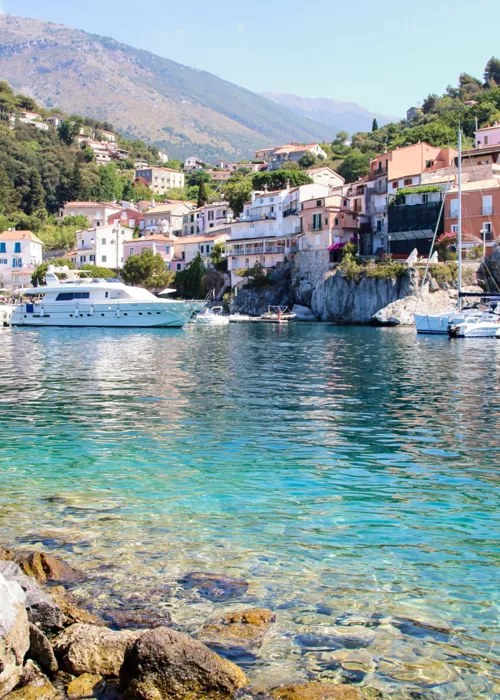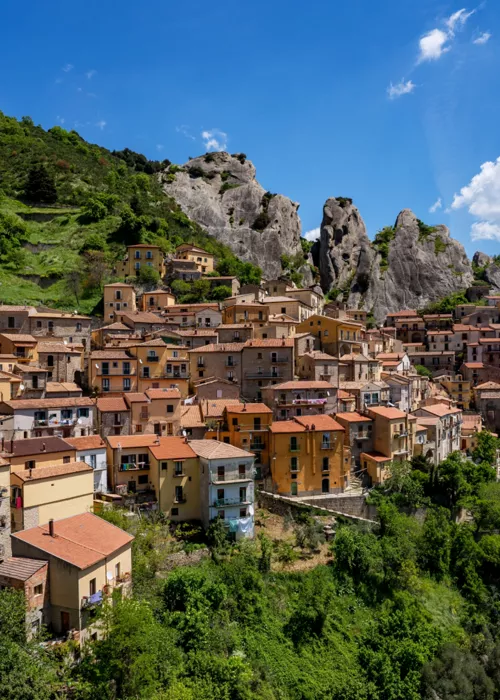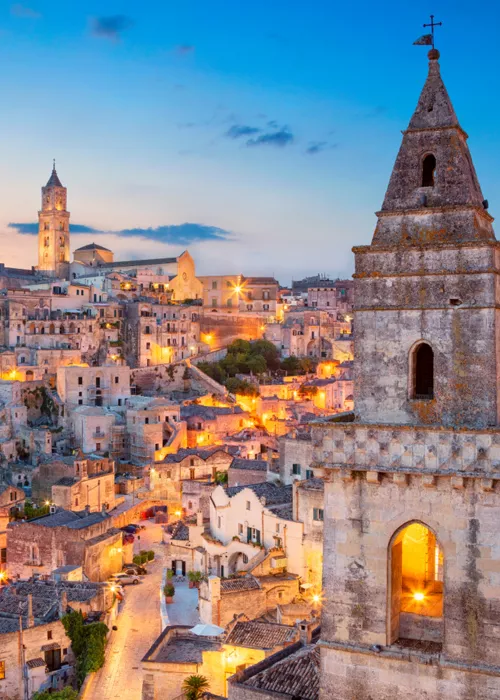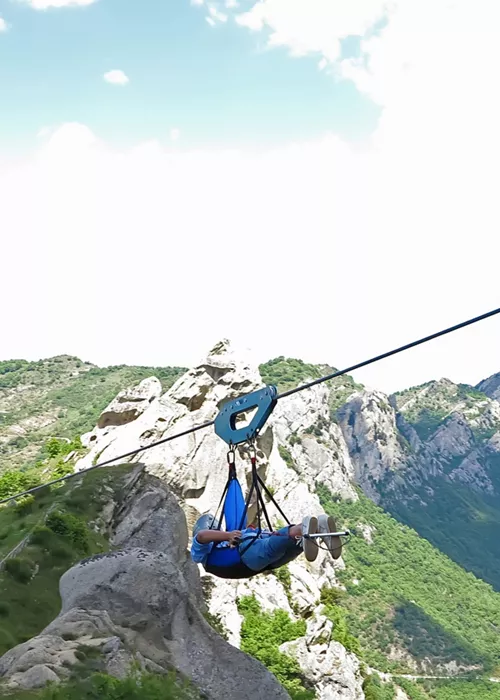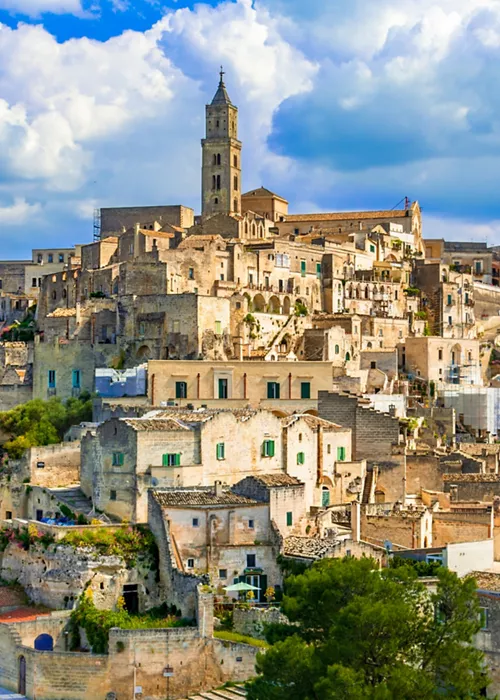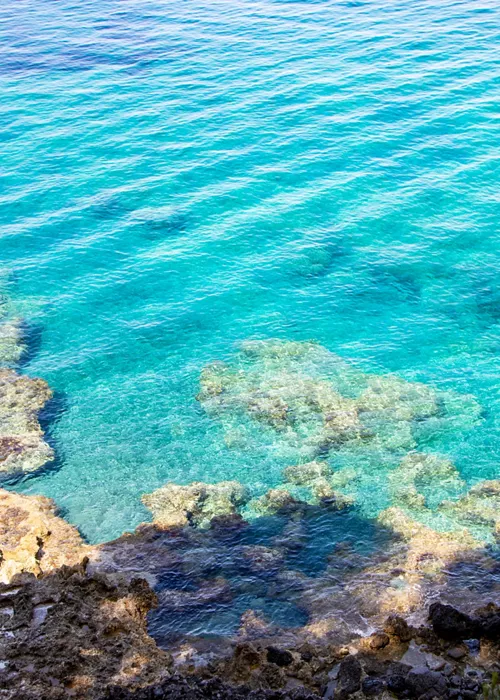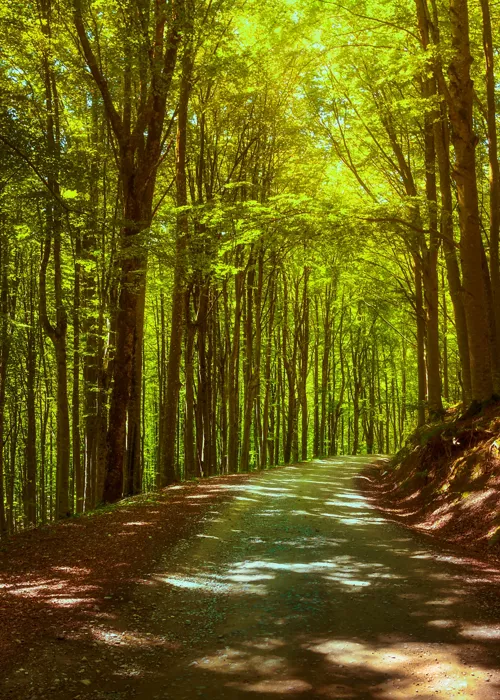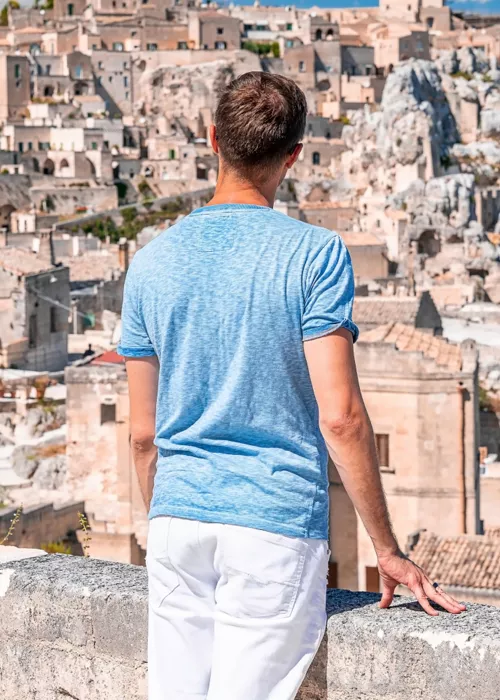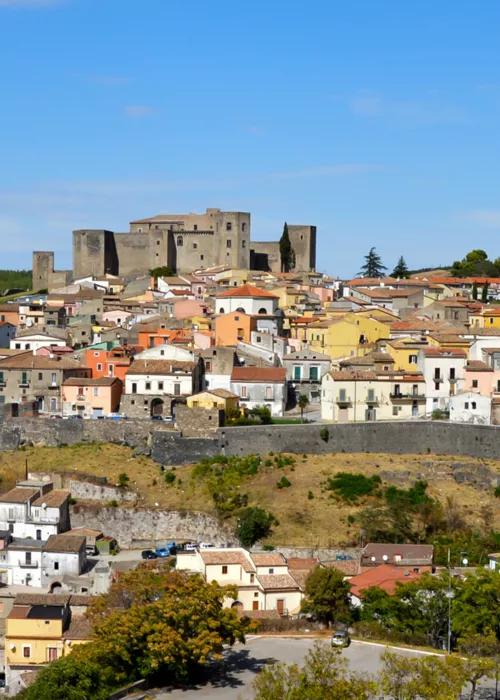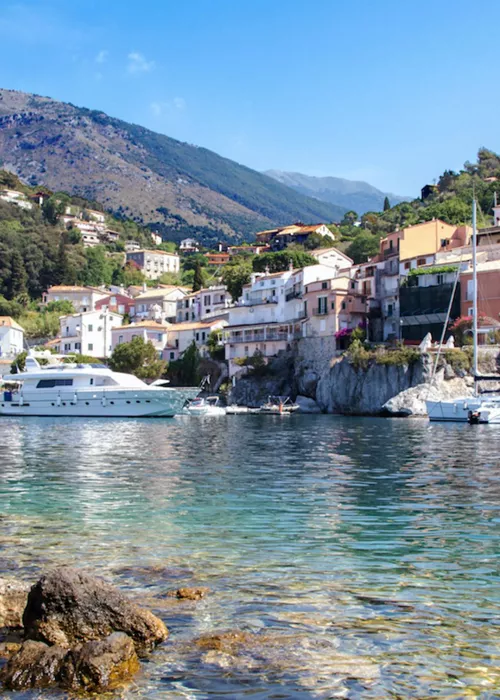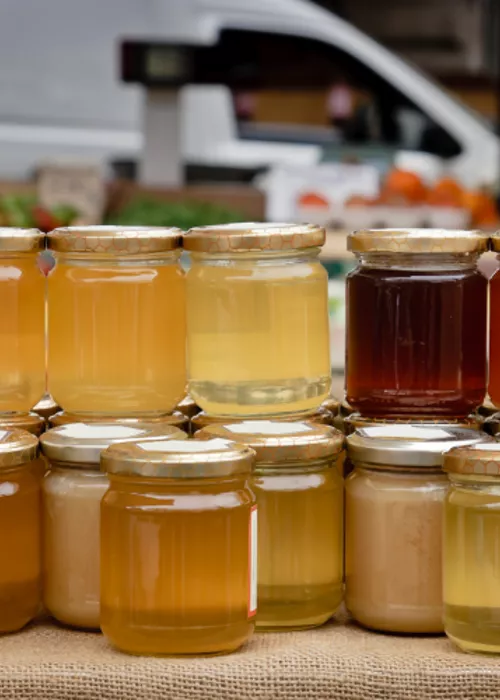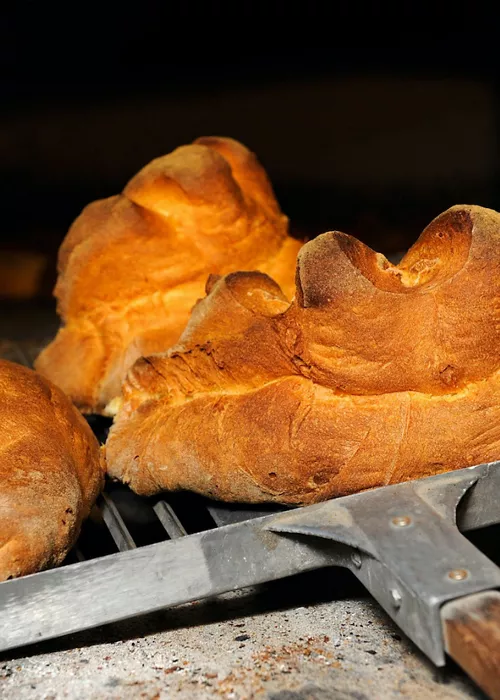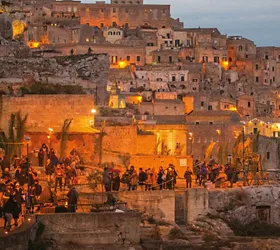Unearth northern Basilicata and the villages of Acerenza, Venosa and Rionero in Vulture
9 minutes

Basilicata is an area of forests and mountains located in the southern part of Italy. It borders the regions of Calabria and Puglia as well as the Tyrrhenian and Ionian Seas.
In this article, I will explore the area of northern Basilicata and the villages of Acerenza, Venosa and Rionero in Vulture.
Visiting a local village in northern Basilicata is a special experience and is a unique place to unearth in the low season. If you wish to explore the remote villages of Basilicata, your best option is by rental car. For this reason, I turned the adventure into a road trip so that I could discover beautiful, remote places, normally surrounded by nature and scenic views with a real, local atmosphere worth unearthing.
Here is my guide to visiting the north of the Basilicata region:
Explore the cathedral village of Acerenza

Top 5 things not to miss:
- Explore the cathedral of Acerenza.
- Visit the Crypt room in the basement of Acerenza cathedral.
- Visit Museo Diocesano Acerenza.
- Enjoy the vista views overlooking lake Acerenza.
- Hike to and walk around Lago di Acerenza.
Acerenza is part of the I Borghi Piu belli D'Italia - most beautiful villages in Italy.
When we arrived in Acerenza, we couldn't see the Borgo at first due to the thick fog that covered the whole village. This is rather common due to the location close to the lake called Lago di Acerenza. This makes for a perfect opportunity to create some fun foggy photography during your visit to Acerenza.
After a night of rest at a lovely guesthouse, we were delighted to wake up to a fogless Acerenza so we could finally explore the village. The guest house didn't have any WiFi access which is common in Acerenza, so we made the most out of the great internet connection at a cafe close to the cathedral, where we had a delicious breakfast.

Acerenza is most popular for its cathedral which was built in 1080 by archbishop Arnaldo. The cathedral has recently been renovated and restored keeping its Romanesque-Gothic style intact. Within the cathedral, you can find a marble bust of Julian the Apostate and two naves and aisles with canvasses dating back to the 16th century.
The highlight of the cathedral has to be the crypt located in the basement of the cathedral which dates back to 1524. The stunning detail of the wall art and pillars will take your breath away.
The funniest part of the Crypt was the €1 coin machine that activates a limited 10-minutes of lighting. You've been warned, use your 10 minutes wisely to take it all in or expect to put a few more coins into the light meter to extend your visit.
If you have some extra free time in Acerenza, be sure to visit the local museum, Museo Diocesano Acerenza. The museum mainly houses objects from the treasury of the Cathedral, with a wide selection of items such as paintings, silverware, wooden statues and carved stones as well as a collection of archbishop items throughout the years.
Acerenza is located on top of a hill overlooking the surrounding countryside offering incredible views so make sure you take some awesome photos from the viewpoint behind the cathedral.
Why not go on a hike from the ancient Cathedral of Acerenza to lake Lago di Acerenza?
The hiking route is part of the 2000 km trail route of the Via Francigena that goes from Canterbury, UK to Rome and continues to Jerusalem.
Work your way through the winding village roads whilst taking in the incredible vista views of the surrounding valleys and mountains. Follow the route from the foot of the hill through a mud track that leads you towards the lake. Along the way, you will stumble across some local olive trees and wheat farms.
On a clear day, the walk around the lake is a peaceful experience with the backdrop of Acerenza towering over the lake from above. The hike from Acerenza cathedral to the lake, with a loop of the lake, will take you around six hours to complete and is a full day of hiking.
A great way to experience a section of an ancient pilgrims hiking route in Basilicata.
Discover ancient history in Venosa

Top 5 things not to miss:
- Explore the grounds of the Venosa Aragonese Castle.
- Visit the National Archaeological Museum.
- Discover the open-air archaeological park.
- Grab an aperitif in the Piazza Umberto
- Discover the piazza Orazio and the statue of Horace
Venosa is part of the I Borghi Piu Belli D'Italia - the most beautiful villages in Italy.
Welcome to the historical village of Venosa, Basilicata.
First, head towards the grounds of the Venosa Aragonese Castle. You can explore the open grounds and they have a selection of outdoor exhibitions you can check out as well as walk up to the castle towers. Be sure to also enjoy Venosa Aragonese Castle at night time as spotlights are used to light up the castle which is a wonderful attraction to admire with a nice evening drink looking over from the terrace at the Piazza Umberto.
Outside of the castle grounds you will find the Piazza Umberto, which offers a wide selection of bars and cafes, and is a great lively place on the weekends and evenings to grab a drink or a bite to eat in Venosa.
Then visit the National Archaeological Museum located in the basement of the castle which has a large selection of items dating back to the Roman age that has been excavated and discovered from the open-air archaeological park.
Then head on over to the open-air archaeological park called the Holy Trinity Complex which has a large selection of ruins remaining from an ancient Roman town called Venusia which is now the modern-day Venosa. The site has the remains of an ancient church, an uncompleted church, an amphitheatre, a spa and a residential area.
During Roman times, the traditional central village of Venosa used to be fortified and you can still see the remains of Roman city walls on display today.
Many fragments of Roman workmanship can be still found today scattered around Venosa. One great example can be seen built into the walls of the cathedral so be sure to look up and see if you can spot them on your walk around the village.
Venosa also has a vibrant street art scene, be sure to check out a selection of different commissioned wall art installations that can be seen as you walk around the village.
The castle, archaeological museum and open-air archaeological park can all be visited in one day with the purchase of a €2.50 ticket which is an absolute bargain considering that in October we had the whole place to ourselves.
Loads of ancient history can be explored in Venosa.
Venosa is also the birthplace and home of Quinto Orazio Flacco, known in the English-speaking world as Horace, who was the leading Roman lyric poet during the time of Augustus. You can visit the house of Orazio, which dates back to Roman times. The house is a reconstruction of what it would have looked like back in Roman times and is open for visitors to explore.
Another square to discover in Venosa is the centrally located Piazza Orazio, which is a popular spot in the morning amongst the locals to enjoy breakfast. Piazza Orazio is also the location and home of a statue of Horace, so be sure to check that out.
Venosa is also home to the Jewish Catacombs which have inscriptions in Hebrew, Greek and Latin and show the importance of the Jewish population in the 4th century in the area. Due to the fragile environment and safety restrictions of Venosa Jewish Catacombs, the area is currently closed off to visitors.
Trekking to the village of Rionero in Vulture

Top 5 things not to miss:
- Trek through the Belvedere forest.
- Visit San Michele Abbey, Monticchio.
- Walk around Lake Monticchio.
- Try a local chestnut pastry dessert.
- End your trip at Palazzo Fortunato, Rionero in Vulture.
On our last day exploring the northern Basilicata we decided to hike from Venosa to our last village, Rionero in Vulture, by trekking through the Belvedere forest. We happened to be hiking during the chestnut season and Monticchio is full of them and brings many visitors to Belvedere forest and lake Monticchio this time of year to gather chestnuts.
As well as the chestnuts, the Belvedere forest is covered with a large selection of birch trees which look incredibly scattered along the trekking path when the sunlight hits them. The forest feels like a scene out of Lord of the Rings movies, really cool and mysterious looking making it a fun hiking route to follow.

Along the trail, you will pass the Monkey Priest crossing; legend has it that a priest once brought a monkey to this spot along the route.
The path takes you towards the San Michele Abbey, Monticchio which was founded in the 10th century and was carved into the side of the rock cliff. The Abbey allows you to unearth stunning views of Lake Monticchio from the balconies within the chapel.
Next on our agenda was a visit to the old castle at the Archaeological Park of Sant'Ippolito. You do need to apply for permission in advance to get the key to go to the top of the tower. The best way to do this would be to book a local tour guide who has access to this area so it might be worth booking this in advance ahead of time.
At lunch, we tasted a wide selection of Basilicata classic dishes. On the menu was a starter of antipasti of cold cuts & cheeses from the region with a few main courses which included a pasta dish, a pork meat dish with oven potatoes and a seasonal chestnut pastry to finish for dessert. It was also nice to end the meal with the restaurant's very own homemade limoncello. It was a feast of the lunch menu and perfect for after a long day of trekking through the forests and lakes.
If you have some additional time you can visit the Bourbon Prison and Brigandage Museum also located in the same area.
After a long day of hiking from Venosa, we arrived in our last village in Basilicata, Rionero in Vulture.
What a journey it has been travelling across Basilicata and visiting all the different villages in the area of Potenza. Taking some time to sit down and reflect at the centre of Rionero in Vulture’s Palazzo Fortunato.
As we looked back on the trip, the sun started to set, we started to notice a lot of elderly gentlemen chit-chatting away taking their time sitting on the chairs scattered around the Palazzo.
The Village life in Basilicata is a special one and it's been great exploring them over the past couple of weeks.
Useful information:
Best time to visit:
The best time to explore northern Basilicata is in the shoulder season of Autumn time. This way you still get to enjoy the last parts of the wonderful south Italian sun without the busy crowds of the summer. Autumn is also a magical time to explore the Autumn leaf color foliage that can be discovered in the surrounding forests of northern Basilicata as well as it being chestnut season in the area. You will find that most villages have limited options when it comes to accommodation and places to eat. But the positive aspect is Basilicata is an absolutely beautiful area to discover and a majority of the time you will have the whole place to discover for yourselves.
How to get there:
Public transport in Basilicata is practically non-existant or can be a challenge. Your best bet is to rent a car to explore the region and turn this adventure into a road trip.
To reach the north of the Basilicata region, first fly into Napoli airport where you can also rent a car easily and then it's around a two-hour drive to reach the region.
Article written about the experience of Dave Brett - Travel Dave.
Author: Dave Brett - Travel Dave


